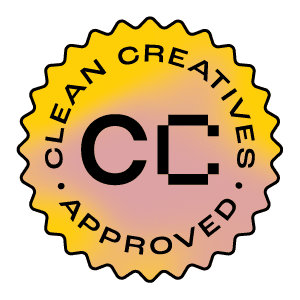7 Pitfalls To Avoid in Your Sustainability Story

We’ve seen it over and over: companies tell purpose-driven stories that fail, or worse, blow up in their faces. But why does this happen? In this post, we outline seven pitfalls to avoid when telling your sustainability story.
In mid-2018, Starbucks announced a plan to eliminate single-use, plastic straws from all their stores by 2020. Like most environmentalists, I thought this was a step in the right direction. Plastic straws are terrible for the environment and present significant risks to both wildlife and humans. Plus, microplastics have been found in more than 90% of table salt, 90% of bottled water, and nearly all marine life.
However, closer inspection of Starbucks’ announcement revealed that the new lids they introduced to eliminate straws actually contained more plastic than the straws themselves:
It is hard to gauge exactly how much Starbucks’s decision to increase its use of plastic, but eliminate plastic straws, will help the environment. To some extent the move to Nitro lids feels like a way to channel some easy PR from the growing anti-straw movement, rather than a meaningful sustainability initiative.
—Arwa Mahdawi, The Guardian
While Starbucks’ intentions may have been good, the results defeated the purpose. Making a change that seems simple on the surface can be complicated to pull off. It complicates the process of telling an organization’s sustainability story.
Storytelling Oversights
Stories like these are increasingly common. Sometimes, as in the Starbucks case, it’s hard to tell whether these oversights are due to intentional negligence, human error, or, as noted above, an attempt to earn some quick PR.
Regardless, they don’t cast companies in a very favorable light. At the least, these companies will be accused of greenwashing. Worst case scenario, depending on the situation, companies can get hit with lawsuits, fined, lose customers, or put out of business.
For more than two decades now, Mightybytes has grounded our work and company in helping mission-aligned clients tell authentic stories using good story structure, clear content workflows, and other content strategy techniques. The methods and technologies with which we do this have changed over the years but our purpose for doing so has not: telling a compelling story is a great way to engage people and inspire them to take action.
However, you don’t want things to go awry. For this post, we explore seven potential pitfalls organizations can fall into when telling their sustainability story.

Why Authentic Sustainability Storytelling is Important
Human brains are hardwired for stories. We cheer our heroes on journeys through pain, hardship, success, and triumphs. We share those tales—in-person or online—that are most meaningful to us. Good stories tap into our brain chemistry and have the power to change attitudes, beliefs, and behaviors.
In a study by the Center for Neuroeconomics Studies, researchers found that good stories—particularly those that are character-driven and filled with tension—trigger oxytocin, which enhances empathy, in our brains:
We discovered that, in order to motivate a desire to help others, a story must first sustain attention – a scarce resource in the brain – by developing tension during the narrative. If the story is able to create that tension then it is likely that attentive viewers/listeners will come to share the emotions of the characters in it, and after it ends, likely to continue mimicking the feelings and behaviors of those characters.
—Paul J. Zak, Center for Neuroeconomic Studies
Many tensions exist between (often large) companies and the environment. Knowing this, it stands to reason that character-driven stories exploring these tensions are likely to resonate with readers. I’m simplifying, of course, but this study and others like it show that storytelling should be fertile ground for most sustainability-minded organizations. But it’s a delicate balance. Here’s why.
Good Stories Shift Perceptions
Good, authentic stories are powerful tools to change minds and shift how people perceive the narrator. If that narrator is your company or nonprofit, you can potentially alter the way potential customers feel about your organization. However, a sustainability story can’t exist in a vacuum. A good sustainability story must be backed by actions. More on that below.
Align Products and Services with Issues you Care About
We’re big fans of impact business models—where revenue generation is inextricably linked with impact creation. In Mightybytes’ case, we do this through offerings like green web hosting, sustainable web design, digital accessibility, and educational materials. However, every company is different.
Companies that align products and services with their ability to generate profit in ways that consider all stakeholders (rather than exploiting them) provide many opportunities for compelling sustainability stories.
- For B-to-C companies, sustainability storytelling can help you align products and services with customers’ personal identities.
- For B-to-B companies, these stories help potential customers make educated choices and forge relationships with partners whose values are aligned with yours.
- For nonprofits, stories connect people with issues they care about and, typically, inspire them to take action through programs and services.
Improve Relationships with Storytelling
Increasingly, more people shop their values, making purchasing decisions that reflect issues they care about:
Eighty-six percent of consumers believe companies should take a stand for social issues – and they’re ready to support that stand with their purchases.
—The Shelton Group, Brands for Stands study
For some, the relationship is purely transactional and that’s that. Others, however, may want to engage on a deeper level, whether that’s through loyalty programs, becoming an affiliate, signing up for your newsletter, or wanting to work for or partner with your organization.
Often, the first interactions people have with your company when considering these decisions involve your content. Your stories can lay a strong foundation for more meaningful relationships with community, employees, suppliers, customers, and other stakeholders.
Use Sustainability Storytelling to Create Shared Value
Finally, you can’t talk about sustainability storytelling without mentioning its impact on the bottom line. Yes, compelling stories can improve sales, especially when you have clearly defined, values-aligned customers. They can also help you create shared value in ways that are not purely monetary, some of which I’ve noted above.

7 Reasons your Sustainability Story Might not be Working
There are many compelling reasons for companies to craft authentic sustainability stories. Unfortunately, companies often fail to engage their customers with these efforts. Jill Pollack, Chief Story Wrangler at StoryMode, a company that teaches storytelling and creative strategies, and esteemed member of Mightybytes’ advisory committee, says audience comes first:
It’s not about you! No matter how much you want to share about your company and what you’ve done and hope to achieve, stop and think about your audience. At StoryMode we have several methods of analyzing our audiences to find that elusive cross-section of content where what matters to them intersects with what matters to you.
—Jill Pollack, StoryMode
1. Self-Focus vs. Outcomes Focus
Per Jill’s advice above, it’s your sustainability story, so it stands to reason that you might see yourself as the hero in your own hero’s journey. This might be true, but it’s important to stay focused on what readers want to learn from your story. We run into this all the time when creating digital products with clients. It’s one thing to check off a list of features, but did those features actually help you achieve your goals? Stay focused on outcomes. How many tons of waste was diverted from landfills? How many people did you help? What’s their story?
2. Focusing on Numbers vs. Stories
Stats are important to a sustainability story and offer great ways to emphasize key points, especially as infographics or data visualizations. However, for good marketing communications, don’t supplant a good story with statistics, no matter how compelling they might be. Strike a balance between the two while prioritizing the story you want to tell.
3. Stories in a Vacuum
If you’re telling the story but not living the story, problems can arise. When sustainability communications are created in a vacuum—like when your CSR department operates independently, or sometimes exclusively, from the rest of your business—you miss valuable opportunities to tell a unified story. Worse, if your sustainability story is regarded as inauthentic because it’s at odds with other things your company does, you can irreparably damage your brand reputation.
4. Involving Stakeholders
Related to the last point, not involving the right stakeholders in your sustainability story can lead to disappointing results. Sustainability programs offer many opportunities to engage stakeholders, especially employees, in your organization’s efforts to create positive social and environmental change. These people are great story resources.
Not sure which stakeholders to include in your sustainability storytelling? Use a stakeholder mapping exercise to identify not only who your stakeholders are, but also their likelihood of getting involved and how your efforts might impact them.
5. Stories by Committee
While engaging stakeholders is important, trying to please too many of them can dilute your story. Consensus-building and collaboration are critical to running a successful organization, but sometimes too many stakeholders with conflicting priorities can be problematic. When running design sprints, we always choose a “decider”, the one person who has final say if we can’t come to a consensus on decisions. Striking a balance between your organization’s (sometimes conflicting) goals and the story your users want to read is important.
6. Findability, Usability, Accessibility
We cover these topics a lot on this blog, so it made sense to include them here as well. If your sustainability report is buried three levels deep on your website where no one can find it, then it’s likely not doing you much good. Similarly, if it exists as an Excel spreadsheet, Word doc, or maybe even a PDF, there are a number of potential problems with this. It won’t likely be crawled by search engines. It also may not be viewable on mobile devices. If it’s a large file, it certainly can’t be downloaded in areas with low bandwidth. But most importantly, if it’s in any type of format that can’t be read by people with disabilities who may use assistive technologies—up to one billion people worldwide—you risk potentially alienating a large percentage of your audience.
While this isn’t directly related to storytelling, how you present your sustainability story can make the difference in whether or not people engage with it.
7. Your Customers Just Don’t Care
Finally, it’s entirely possible that your customers just don’t care about your sustainability efforts. If your customers don’t care, maybe some of your investors or employees do: Know your audience! It could be that sustainability isn’t important to them or perhaps your brand already has a firmly entrenched reputation for not caring about environmental, social, and governance issues related to sustainability, as is the case with most fossil fuel companies. If your goal is to change minds and shift behaviors, you have a long journey ahead of you. In my opinion, it will be a worthwhile journey, but a long one nonetheless.
Good Storytelling Practices
In addition to avoiding the above pitfalls, make your story compelling by including an opening scene where you introduce characters, setting, and conflict, preferably with a ‘rising’ action that introduces conflict and tension. Follow that tension to some sort of strong climax, then end with a resolution. If it’s a marketing post, include a clear call-to-action. But remember to keep it simple:
Less is more! Seriously. One good detail has the power to make your reader understand the broader implications of your story. So you don’t need to tell every single thing you did, or every single outcome. Instead, choose two or three of what Eudora Welty called, “significant” details and focus on those.
—Jill Pollack, StoryMode
Final Words: Be the Story
You can’t have ethical marketing without being an ethical company. It sounds simple, but the reality for most companies (and even some nonprofits) is more complex, requiring cross-discipline and interdepartmental communication and collaboration. Companies that don’t understand this are at risk of having their efforts fall on deaf ears, or worse, find themselves the subject of public ridicule, resulting in lost customers and revenue.
Conversely, companies that diligently pursue a social contract to benefit society as a whole while also pursuing profit are better positioned to tell successful sustainability stories, especially if they engage stakeholders in the process, as noted above.
Digital Carbon Ratings, now in Ecograder.
Understand how your website stacks up against industry carbon averages with this new feature.
Try Ecograder


